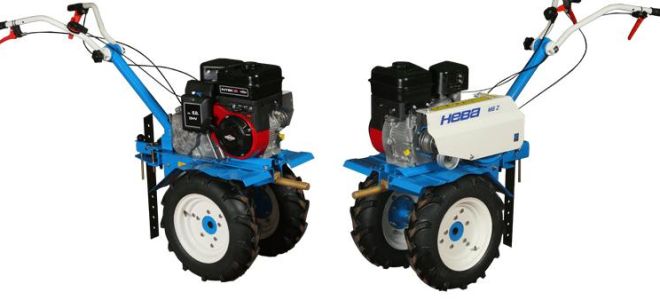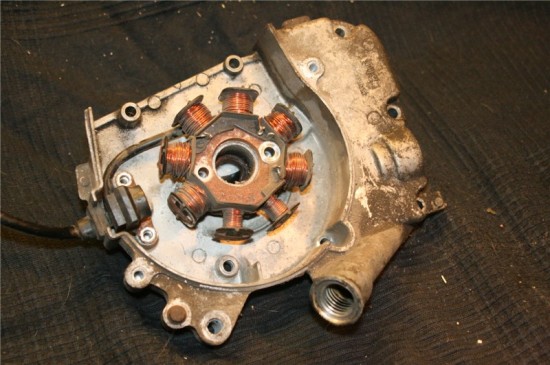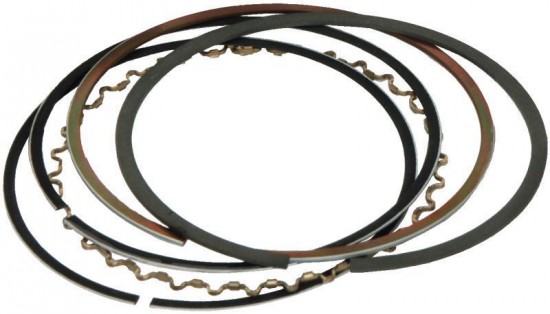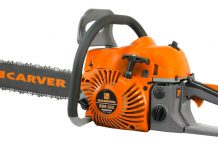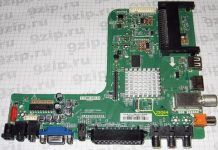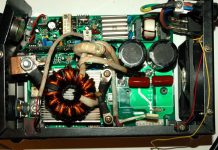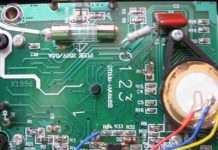In detail: do-it-yourself Neva walk-behind tractor repair from a real master for the site my.housecope.com.
Some of the information that may come in handy when repairing a walk-behind tractor, see the article Device of a walk-behind tractor.
Engine won't start... If we are talking about a gasoline engine, when troubleshooting, it is necessary to consistently check all possible causes of malfunctions, namely:
- Switching on the ignition.
- Fuel in the tank.
- Opening the fuel cock.
- The state of the carburetor air damper (when starting a cold engine, it must be closed).
- Fuel flow to the carburetor. To do this, you need to fill the float chamber by drowning the float button (fuel should start pouring out of the hole in the float chamber cover), or disconnect the fuel hose from the carburetor and check if the gasoline runs freely. If the fuel runs too thin or does not run at all, this may indicate a dirty fuel filter in the tank or a clogged fuel tank cap air valve. Repair of the walk-behind tractor in this case will be reduced to cleaning the filter or valve.
The state of the spark plug may indicate the flow of fuel into the engine cylinder, which in any case must be checked when troubleshooting the ignition system. The candle is unscrewed from the cylinder cover, having previously disconnected the wire, and inspected. If it is dry, it means that the fuel mixture is not being supplied to the cylinder. And if before that it was established that gasoline enters the carburetor, it means that the reason for not starting the engine may be in the carburetor - contamination of its filter mesh, clogging of the jet or some other malfunction. Whatever it is, the carburetor needs to be removed, disassembled and cleaned, however, this device is very complex and before repairing it, you should at least look at the diagram of the carburetor.
| Video (click to play). |
A wet candle indicates that fuel is entering the cylinder. Sometimes the walk-behind tractor does not start from an excess of fuel mixture, so if there is too much gasoline on the plug, you need to dry the cylinder by thoroughly “pumping” the engine with a hand starter with the plug turned out. Before that, you need to shut off the fuel supply.
If the plug is dirty with carbon deposits, it should be cleaned with gasoline and fine sandpaper. It is also necessary to check the size of the gap between the electrodes and, if necessary, adjust it in accordance with the requirements of the operating manual. Usually the gap should be about 0.8 mm.
After that, you need to check for the presence of a spark - connect a wire to the candle, press its metal part to the cylinder cover and simulate the engine start with a starter. If the spark plug is intact, a spark will appear between the electrodes. Sometimes it happens that a spark occurs, but it is so weak that it is not enough to ignite the fuel. If in doubt about the strength of the spark, you need to check the operation of the engine with a new spark plug.
The absence of a spark can mean a malfunction of the spark plug, lack of contact in the electrical circuit, violation of the gap between the ignition coil and the magnetic circuit, malfunction of the electronic ignition coil. All of these elements must be checked. Defective spark plug and ignition coil must be replaced.
In the event that the walk-behind tractor is equipped with an electric starter, the engine may not start due to a discharge of the battery, a blown fuse, or a malfunction of the starter. Check the battery charge, replace the fuse, repair or replace the starter.
The engine does not develop power... If the engine of the walk-behind tractor starts, but does not develop power (it works intermittently, stalls or does not pick up speed under load), the following malfunctions may be possible causes of unsatisfactory operation.
The air filter is dirty, as a result of which insufficient air enters the carburetor, and the fuel mixture is re-enriched. Correct maintenance of the walk-behind tractor involves periodic cleaning of the air filter, however, in very dusty work, more frequent cleaning may be required. It is necessary to check the condition of the air filter and, depending on its material, clean it using one of the appropriate methods. The paper filter is cleaned by lightly tapping on something solid and blowing it with a vacuum cleaner, the foam filter is washed in water with detergent and dried, the mesh filter is blown out with a vacuum cleaner, etc. At the end of their service life, filters must be changed.
Poor fuel quality. Bad fuel must be replaced with the one recommended by the manufacturer.
Defective ignition system. You need to check it as described above. Clean the spark plug and adjust the gap between its electrodes, check that there is no damage in the electrical circuit and the gap between the coil and the magnetic circuit (if this is provided for by the walk-behind tractor repair manual).
Sometimes the engine cannot develop power due to clogging of the muffler with combustion products. In this case, you need to disassemble the muffler and check its condition, if necessary, rinse it in gasoline and clean it with a carbon sink using detergents. The non-dismountable muffler is dried with a hairdryer after washing. Remember that carbon deposits contain substances that are carcinogenic and should not be dry cleaned that could cause them to inhale. When removing the muffler, plug the engine outlet with a clean cloth.
Dirt or improper adjustment of the carburetor of the walk-behind tractor. It is necessary to remove and clean the carburetor, and then adjust it, if provided for by the instructions for the walk-behind tractor.
A drop in engine power can be caused by a decrease in compression due to wear of the cylinder-piston group, the formation of scoring and scratches on the cylinder and piston, "sinking" in the grooves or broken piston rings. In this case, check the compression by connecting a compressor to the spark plug hole and turning the engine shaft with a starter. Normal compression is characterized by a value of at least 8 atm (normal compression can be indicated in the engine specifications). When measuring it, it must be taken into account that the presence of a decompressor in the engine may affect the readings of the compressor. The compression value in this case is about 5 atm. will not mean a low degree of wear of the cylinder-piston group, but the actuation of the decompression valve.
Diesel engine won't start... For most users, repairing and setting up a walk-behind tractor with a diesel engine is a more difficult task than repairing a walk-behind tractor with a gasoline engine. Not so much, perhaps, because of the structural complexity of the diesel engine, but because of the lack of experience, since household appliances are usually equipped with gasoline engines.
The most common faults or conditions that can cause diesel engines to not start are outlined in the following table. A detailed list of diesel malfunctions and ways to eliminate them are set out in the operating instructions for specific diesel motoblocks.
- Cylinder head nuts not tightened or cylinder head gasket damaged.
- Worn piston, cylinder liner or piston rings.
- Piston rings seized or broken.
- The correct valve clearance has been violated.
- The valve stem is jammed in the guide.
- Tighten the cylinder head nuts evenly in a diagonal sequence. Replace the cylinder head gasket.
- Replace worn parts.
- Check piston rings, flush or replace them.
- Adjust clearance.
- Remove the valve, flush it and the guide with fuel.
Faults in the clutch itself depend on its type. If the walk-behind tractor has a belt drive that acts as a clutch, slippage can occur if there is oil contamination on the drive belt or pulley, the belt is not tensioned or is too worn out. The remedies for these problems are obvious - clean the transmission elements from dirt, tighten or replace the belt.
In a dry disc clutch, slippage can be caused by oil contamination on the driven and driven discs. It should be removed by rinsing the discs with gasoline and drying.
Regardless of the type of clutch (dry or oil), slippage can lead to wear of the friction layer of the discs, weakening of the compression spring, lack of a gap between the pressure element and the release bearing. The remedy depends on the nature of the problem. Worn discs and springs change, if the gaps in the clutch are violated, the clutch of the walk-behind tractor is adjusted accordingly.
The clutch does not disengage completely... In this case, you should also start by checking the tension in the cable from the control handle to the clutch.
Incomplete clutch disengagement can also be caused by deformation of the friction discs, sticking them on the splines, non-compliance with the required parameters of the characteristics of the oil poured into the clutch housing. The latter applies to oil bath couplings. It is necessary to replace the deformed discs, eliminate the causes of their jamming on the splines, change the oil.
Increased noise in the gearbox (gearbox)... Noises in the gearbox may occur due to a lack of oil in it or a mismatch in its quality with the required parameters - in terms of brand and purity. It is necessary to add oil to the gearbox of the walk-behind tractor or replace it.
Transmission units can make noise due to the banal non-tightening of fasteners. You need to review and tighten them.
Most often, noise occurs due to worn gears and bearings. In this case, they are harbingers of more serious breakdowns. Timely repair of the walk-behind tractor gearbox, which consists in replacing worn parts, will help to avoid them.
Failure to turn on, spontaneous shutdown, or difficulty changing gears... These faults can occur for a number of reasons:
- Due to the deterioration of the parts involved in gear shifting. Usually, wear (rolling) of the ends of the engaging gears occurs, which leads to incomplete engagement and self-deactivation of the speeds. In this case, it is necessary to disassemble the walk-behind tractor gearbox and dress the gear teeth by grinding or, if the wear is too great, replace them.
- Due to abrasion of the shaft splines, as well as axial displacement of the shafts due to wear on bearings and circlips. The axial position of the shafts can be adjusted by installing additional circlips. Excessively worn bearings and rings must be replaced.
- Due to improper adjustment of the clutch, which can lead to difficult gear shifting. The clutch is not squeezed out (disengaged) to the end. The inexperience of the operator releasing the clutch lever too early when shifting gears can also lead to this. You need to adjust the clutch and learn how to shift gears correctly.
The gearbox is a rather complex unit. If the work and device of the walk-behind tractor is a complete secret for the user, you should not start repairing it yourself. It is better to entrust this work to those for whom maintenance and repair of machines is a professional matter.
Transmission units are warming up... Among the main reasons for this malfunction are the worn out bearings, insufficient level of transmission oil in the crankcases, and the inadequacy of its condition to the required parameters.Corrective measures: replace bearings, top up or replace oil.
Oil leaks from the gearbox (gearbox)... This occurs when worn or improperly installed oil seals of bearing assemblies, not tightened caps or damaged gaskets under them, clogging of the air valve (breather) of the oil fill cap, filling oil into the crankcase above normal. The leak is eliminated, respectively, by replacing and correctly installing the oil seals, replacing the gaskets and tightening the cap fastening bolts, cleaning the breather, bringing the oil level to normal.
Instability of the walk-behind tractor while driving (yaw)... Different pressure in the right and left wheels, uneven wear of the tire tread, improper adjustment of trailers, in particular, the plow, leads to this type of movement of the walk-behind tractor. In this case, the adjustment of the walk-behind tractor should be reduced to equalizing the pressure in the wheels and adjusting the trailers. It is also necessary to use tires of the same degree of wear.
Increased vibration of the walk-behind tractor... Increased vibration usually occurs when incorrect adjustment or loosening of attachments (cutters, rotary mowers, etc.). If vibrations occur, immediately stop the walk-behind tractor and put the towing devices in order - fix the cutters or cutting segments of the rotary mower, replace them if they are worn out or broken.
The article lists only the most common malfunctions. The practice of operating motoblocks is replete with a much wider list of malfunctions - both atypical, which are sometimes very difficult to diagnose, and those whose nature and place is beyond doubt.
If it is not possible to eliminate the malfunctions of the walk-behind tractor on your own, the only option remains is to contact the service center for the maintenance and repair of walk-behind tractors.
Like any technique, a walk-behind tractor requires timely maintenance and repair. And it is advisable to entrust their implementation to specialists who have the necessary tools and equipment and know their job well. However, if you are also familiar with the device of internal combustion engines and understand the topic of mechanical engineering, then you can do a lot of what may be required to restore the machine's performance on your own.
Diesel and gasoline engines have different motor resources. For the former, the normal figure is 4000 m3 / h, but the latter are capable of providing only 1500 m3 / h. Despite this, diesel models of walk-behind tractors are not in high demand. After all, both when buying and during operation, they are much more expensive. Therefore, most likely you are working with a walk-behind tractor equipped with a gasoline (carburetor) engine.
All breakdowns that may arise during the operation of agricultural mini-equipment can be conditionally divided into two categories:
- Engine malfunctions:
- startup problems;
- malfunctions.
- Malfunctions of other units and mechanisms:
- improper clutch operation;
- breakdowns in the gearbox;
- problems with the chassis;
- malfunctions of control and automation;
- malfunctions of walk-behind tractor systems (cooling, lubrication, etc.).
In many ways, the success of repairing a suddenly out of order machine depends on the correctness of the diagnostics. With regard to maintenance, it is carried out precisely in order to identify small malfunctions, which subsequently lead to serious ones.
If you do not have the necessary knowledge, premises, tools and materials necessary for servicing and repairing the motor, entrust the work to a specialist!
If attempts to start the walk-behind tractor were unsuccessful, this means that there are malfunctions in the engine or starting system. In order to determine the source of the breakdown, you first need to check the spark plugs.
If the spark plugs are dry, this means that the fuel mixture is not entering the engine cylinders. There may be several reasons for this:
- there is no fuel in the tank;
- the fuel supply valve is closed;
- the hole in the gas tank plug is clogged;
- foreign objects have entered the fuel supply system.
To fix problems with the fuel supply, you must:
- Fill the tank of the walk-behind tractor.
- Open the fuel cock.
- Clean the drain hole located in the fuel filler cap.
- Remove the fuel cock, drain the fuel tank and rinse it with clean gasoline. After that, remove the connecting hose on the side of the carburetor and blow it out together with the carburetor nozzles without disassembling the latter using the fuel pump.
If fuel enters the carburetor but does not reach the cylinder, the problem is with the carburetor itself. To eliminate it, this unit must be removed, disassembled and cleaned. Well, after that - assemble and install in place. Therefore, before performing all the necessary manipulations, it does not hurt at all to refresh the memory of the device and the principle of operation of the carburetor.
In the event that, when checking the candles, they turned out to be wet, i.e. fuel is supplied normally, but the engine does not start, the problem may be as follows:
- Failure of the ignition system:
- there is a characteristic carbon deposit on the spark plug electrodes (it is necessary to clean the candles with emery, after which they should be rinsed with gasoline and dried);
- the size of the gap between the electrodes does not correspond to that specified by the manufacturer in the engine operating manual (the gap is adjusted by bending the side electrode to the required dimensions);
- insulators for spark plugs or high-voltage wiring are damaged (defective plugs and wiring must be replaced);
- the STOP button is shorted to ground (for normal engine start, the short circuit must be removed);
- contacts in the angles of the candles are broken (contacts should be put in order);
- the gap between the magnetic shoe and the starter does not correspond to the standard value (gap adjustment is required);
- defects are found on the stator of the ignition system (the stator must be replaced).
- Air leaks through the seals of the carburetor, spark plugs, spark plug heads and cylinders, as well as the carburetor and engine cylinder connections.
If a leak is detected in the connections, it is necessary to tighten the fastening bolts, tighten the spark plugs and check the integrity of the gaskets between the plug heads and the cylinders.
- Incomplete closure of the carburetor choke.
To eliminate this problem, it is necessary to ensure free movement of the damper by checking the quality of the drive. If jams are found, they must be eliminated.
Compression and carburetor malfunctions
It so happens that the launch is carried out, but its process is significantly complicated. At the same time, the engine of the walk-behind tractor is extremely unstable and cannot develop power sufficient for normal operation.
The reason for this may be loss of compression, which can be identified by:
- soot on the working surfaces of the valves, as well as the seats of the cylinder blocks;
- deformation of the intake valve;
- wear of the piston rings.
In order to restore compression, you must:
- Check the technical condition of the engine timing mechanism, clean the parts contaminated with carbon deposits, and if there are any defects, replace them.
- Check the condition of the piston rings and replace defective components.
If, during engine operation, black smoke comes out of the muffler, and an excess of oil is detected on the spark plug electrodes, or they themselves are covered with carbon deposits, this means that:
- an oversaturated fuel mixture is fed to the carburetor;
- the sealing of the carburetor fuel valve is broken;
- the oil scraper ring of the piston is worn out;
- the air filter is clogged.
To fix this problem, you should:
- adjust the carburetor;
- replace the leaky valve;
- replace worn piston rings;
- clean or replace a defective air filter.
In the event that, when the engine is running, light smoke comes out of the muffler, and the spark plug electrodes are dry and covered with a white coating, this means that a lean fuel mixture enters the carburetor. This problem is eliminated by adjusting the carburetor operation.
Units and components of motors that are installed on agricultural mini-machinery are exposed to significant loads. They can also fail during the operation of the unit, which will very quickly lead to serious failures.
If suspicious noises, jerks and irregularities in the operation of the walk-behind tractor systems are detected, it is very important to immediately turn off the engine, and then let it cool down - only after that it will be possible to fix the problem.
If, during operation, the motor starts to gain momentum on its own, i.e. is "running out", most likely this means that the fastening of the regulator and traction levers is loose. In this case, the user will have to readjust the motor control drive.
Sometimes, when the throttle is fully open, the engine does not accelerate when the throttle is pressed, but on the contrary begins to lose power until it stops completely. This is a clear sign of overheating, so the walk-behind tractor must be turned off and wait until its components have completely cooled down. After that, you should check the oil level in the crankcase, and also check the cleanliness of the ribbed surfaces of the blocks and cylinder heads.
Under increased engine loads, it can jam. There may be several reasons for this:
- not enough oil in the crankcase;
- a nadir formed on the lower head of the connecting rod;
- the connecting rod or oil spray is completely out of order.
If the motor of the walk-behind tractor is jammed, it will have to be disassembled and the condition of the main units and components should be checked: faulty, deformed, melted, etc. subject to replacement.
What to do if the motor block motor works intermittently and does not develop the required power? There may be several reasons for this behavior:
Air does not enter the carburetor, which means that the fuel does not burn well - the filter will have to be cleaned or changed.
Fuel residues and combustion products form a thick deposit on the inner walls of the muffler, which must be removed.
In this case, the assembly will have to be removed, disassembled and properly cleaned all of its components. After that, the carburetor must be assembled and properly adjusted.
- Wear of the cylinder-piston group.
Temperature and high loads do their job, and even the most durable metal wears out and deforms over time. Such parts should be replaced immediately, otherwise you can pay for this with irreparable damage in the engine itself.
- Damaged ratchet housing or ratchet
The presence of this problem is indicated by the lack of movement of the crankshaft when the engine is started. To replace the clutch housing and ratchet, you will have to completely disassemble the starting block.
- Loosen the screws securing the starter housing to the engine housing.
If the starter cord does not return to its original position, the starter motor must be adjusted. To do this, the screws are loosened and the position of the knot is set by hand so as to ensure the normal return of the cord.
A fairly common reason for the lack of a return stroke of the starter cord is the failure of the starter spring - it will have to be replaced.
The service life of any equipment is significantly increased by competent maintenance of its main units and components. The promptness of replacing worn-out spare parts is also of great importance. Therefore, in the event of the slightest malfunctions and malfunctions, they should be eliminated immediately - as a result, this will prevent much more serious and expensive problems.
The first Neva walk-behind tractors appeared in the 80s. Today, they not only have not lost their popularity, but have become even more in great demand.
Thanks to the constant modernization of models, Neva units delight their customers with an affordable price, good durability, high quality of all components and a long service life. Among the many models of this brand, we will talk about the two most popular: the MB-1 and MB-2 walk-behind tractors. We will learn not only their features, but also try to analyze the most common causes of their breakdown.
This walk-behind tractor can be safely called the "firstborn" in the production of Niva. Of course, by now it has largely been modernized and acquired a more modern design. With the help of such a unit, you can effectively process the site in absolutely any weather. It will excellently recommend itself both on pliable sandy soil and on solid ground. A cast iron cylinder liner ensures its reliability and long service life.
Now we will analyze the most frequent cases of breakdowns of this unit. Usually, all repair instructions can be found in the instruction manual, so if you still have it, you can safely use its instructions. But if this thing is lost, then you can use our advice.
- In case of oil leakage along the output shaft, the first thing to do is to remove the axle shaft cover and replace the oil seals.
- What to do if the gearbox gets stuck? In this situation, you need to disassemble the walk-behind tractor, where you need to replace the broken chain.
- If there is no kinematic connection inside the gearbox, it means that the dangling sprocket in the block needs to be replaced.
- Malfunction of gears: do not turn on at all or do not shift. There may be several reasons for such a breakdown. The first is a destroyed switch cracker. The second - the threaded part of the shift knob is cut off. In these cases, we simply replace the defective parts with new ones.
- Oil leakage along the shift shaft. The first thing we do is check the oil level in the gearbox. If its excess is found, then drain the excess, and if, on the contrary, top up.
- Wear on the lip of the shaft seal. Everything is simple here: we disassemble the gearbox and replace the worn cuff with a new one.
- The restoration of the overrunning clutch should be carried out as follows: remove the starter, remove the clutch, and grind the grooves for the balls. A little oil needs to be poured inside to minimize the friction between the coupling and the shaft. We set everything back.
This unit is an improved model of the MB-1 walk-behind tractor. It features a reinforced gearbox, differential lock, imported engine and other features. All this allows him to be maneuverable and convenient in work, have good tractive power, and be multifunctional using attachments.
It is thanks to these qualities that MB-2 is very popular among buyers.
- Semi-axle separation is not possible. In this case, we check the adjustment of the drive. If it is incorrect, we change the tension of the cable.
- Self-switching off of gears or lack of fixation. This problem can occur in three cases, or the shift control system is broken. Then you need to loosen the screws that hold the board, engage 1st gear and tighten the screws back. Either the spring is broken or the board retainers are worn out. In this case, you just need to replace the broken parts. Either the cheek of the fork is worn out, then you need to disassemble the gearbox and replace the broken part.
- If there is no kinematic connection inside the gearbox, then you need to replace the shift fork itself. There may also be an option that the welding of the gear with the block-shaft was interrupted.
It is worth remembering that before you independently repair the Neva walk-behind tractor, you should carefully read the repair instructions that the manufacturer offers you. If you do not have such instructions, then you should use the tips above. Of course, if you do not have special skills to repair such equipment, then it is better to entrust the Neva MB walk-behind tractor to specialists.There are many service centers that will carry out a complete diagnosis of equipment and will be able to identify the exact cause of the malfunction.
Remember, in order for the walk-behind tractor to serve you for many years and not to succumb to any malfunctions, you need to make a timely oil change and adhere to all operating conditions.
Motoblocks can significantly facilitate work on a personal plot. This is a compact agricultural machinery with high functionality and versatility. With its help, you can not only loosen the soil, but also carry out the basic activities for the care of plants and harvesting.
Like any other technique, walk-behind tractors sometimes fail. Fortunately, they have a relatively simple design, and you can even carry out simple repairs with your own hands. To do this, you need to learn how to determine which part of the walk-behind tractor is out of order, and what needs to be done to restore the operation of the equipment. Our article will help you with this, which not only describes the principle of operation of the walk-behind tractor, but also the main causes of equipment malfunction and how to eliminate them.
Most of the models consist of the same parts, so you can do the repair of the main components yourself.
Each walk-behind tractor consists of a base frame, a gasoline or diesel engine, a fuel tank, a rotor for attaching cutters, wheels and a bracket for fixing attachments. The most important component is, of course, the engine, on the successful operation of which the operation of the equipment will depend (Figure 1). In addition, modern models have fuel supply, cooling, ignition and gas distribution systems, and the occurrence of malfunctions in them can also lead to a shutdown of the unit.
The main function of the walk-behind tractor is to loosen the soil using special cutters that are attached to the frame of the device.
Note: Unlike a conventional plow, the cutter does not overturn the soil and prevents soil erosion.
In addition, the technique can be used to loosen row spacings in the process of growing agricultural crops, and special attachments are useful for harvesting. Simple models (cultivators) consist of several wheels and handles that are used to control the machinery. On the handles there are buttons necessary for control. More powerful and modern models are mini tractors without a cab. In this case, control is carried out by buttons and pedals located on the dashboard.
Despite the fact that walk-behind tractors are produced by a wide variety of manufacturers, it is customary to divide all such equipment into types depending on weight and power (Figure 2).
According to this criterion, walk-behind tractors are:
- Ultralight - weighing up to 15 kg;
- Lightweight (about 40 kg);
- Medium - from 45 to 60 kg;
- Heavy (over 60 kg).
As a rule, all types of equipment are supplied with an internal combustion engine with a capacity of 1.5 to 10 horsepower. This is necessary in order for even the ultra-light model to successfully cope with loosening the soil in areas with heavy and dense soils.
Since the main part of any technique is the engine, the main number of breakdowns is associated with it (Figure 3). In some cases, poor engine performance may be associated with poor-quality fuel or dirty air filter. There are also cases that the engine does not work properly due to insufficient heating, malfunctions of the ignition system, carburetor or pistons.
We will try to understand the main types of damage to the walk-behind tractor, which can be eliminated with our own hands. However, if you are not confident in your own abilities or are afraid that it is impossible to fix the malfunction on your own, it is better to contact a specialist.
If the engine does not start when you try to start, there may be a problem with the engine itself or its starting system.
To troubleshoot fuel supply problems, do the following:
- Check the spark plugs: if they are dry, it means that no fuel is entering the engine cylinders. Such a malfunction can occur when blockages form in the gas tank cap, debris gets into the fuel supply system, when the supply valve is closed or the banal lack of gasoline.
- Refuel the tank and try to start the engine again.
- Check the fuel cock: if it is closed, it must be repositioned to open.
- Clean the fuel tank drain hole.
- Drain the gasoline tank, remove the fuel cock and rinse it with clean gasoline.
- Remove the connecting hose near the carburetor and blow it out (together with the jets).
If all these manipulations did not help, and the fuel enters the carburetor, but does not enter the cylinder, then the malfunction is in the carburetor and this part must be carefully examined.
A common cause of carburetor malfunction is blockages. In this case, it is enough to disassemble the part, remove the source of pollution and reassemble. The instructions, which are necessarily provided by the manufacturer, will help you with this (Figure 4).
The main purpose of all manipulations with the carburetor is to adjust the immersion of the float, which is attached with a bracket to the piston system. It often happens that the bracket is deformed, the float does not sink correctly and the carburetor does not function properly. The bracket is adjusted with an ordinary screwdriver, both with the needle valve open and closed.
After correcting the carburetor, it is recommended to also check the serviceability of the valves. It is necessary to check the tightness of each of them and, if necessary, restore the optimal clearance.
It often happens that during the operation of the walk-behind tractor, extraneous noises appear in its gearbox. As a rule, this is due to an insufficient amount of oil in it, and to eliminate the malfunction, it is enough just to add fluid to the gearbox (Figure 5).
However, if there is enough oil in the gearbox and the noise persists, the brand and grade of oil may not be suitable for your model. In this case, the oil must be completely drained, the system flushed and refilled with new, more suitable oil.
In addition, extraneous noise may be associated with insufficient fixation of the transmission elements. They must be inspected and, if necessary, tightened. It should also be borne in mind that the gearbox elements must be inspected and replaced in a timely manner when the first signs of wear are detected. This way you can avoid more serious repairs in the future.
Engine malfunctions can occur both during start-up and during operation. In this case, it is imperative to check the spark plugs. If they are dry, there is a problem with the fuel supply, and if they are wet, the problem is in the engine itself.
One of the most common startup problems is the failure of the ignition system. To eliminate such a malfunction, first of all, you need to inspect the electrodes of the candles, and remove carbon deposits that could have formed on them with emery. After that, the candles are washed with gasoline and dried. Starting problems can also be related to incorrect electrode spacing. In this case, you just need to carefully bend them to the distance specified by the manufacturer.
In addition, ignition problems can be associated with damaged electrical wiring or spark plug insulators. These items are subject to replacement. Also, the lack of starting the engine may be associated with stator defects. Unfortunately, it is impossible to repair this part on your own and it will simply have to be replaced.
More often than not, the engine shows signs of malfunction directly during operation. This is due to the fact that small agricultural machinery is exposed to heavy loads and requires regular inspection and maintenance.
Note: If the walk-behind tractor began to move in jerks or make extraneous noises, it is imperative to turn it off, let the engine cool down, and only then proceed to the inspection.
Common problems in engine operation are:
- An independent set of revolutions by the engine indicates that the control levers and linkage are loose and need to be readjusted.
- When you press the throttle lever, the engine does not pick up speed, but, on the contrary, loses power. This indicates that the motor is overheating, so the technician must be turned off and wait until it has completely cooled down.
- Interruptions in engine operation can be associated with a clogged air filter or muffler. The equipment must be turned off, cooled and the parts inspected to clean and remove blockages.
In addition, engine malfunctions can be associated with malfunctions in the carburetor or insufficient oil in it. In this case, the part must be disassembled, inspected and filled with new oil.
A walk-behind tractor with a diesel engine is more difficult to repair with your own hands than a gasoline one, since such a motor has a more complex design. As a rule, possible malfunctions and ways to eliminate them on your own are described in the instructions, so we will focus only on the most common ones.
Diesel engine malfunctions can be associated with such problems:
- Clogged nozzle: the part must be removed, cleaned and reinstalled.
- Weak fuel injection pressure you can also adjust it yourself, using the instructions for the technique.
- Engine cranks too easily with starter: this indicates insufficient compression in the cylinder. To eliminate the malfunction, tighten all the nuts on the cylinder one by one and replace the gasket on its head. It is also necessary to inspect the piston rings, and wash or replace them if necessary.
Malfunctioning starter motor can also cause malfunctioning of the engine. Most often, there are situations when the screws securing the starter housing to the engine housing are loosened. In this case, the starter cord will not return to its original position. To fix the problem, loosen the screws and adjust the position of the cord so that it easily returns to its original position (Figure 6).
In addition, malfunctions can be associated with wear on the starter spring. It is impossible to repair it, so the worn out part just needs to be replaced.
| Video (click to play). |
If you want to master the practical skills of DIY repair, we recommend watching a video that describes the main causes of equipment malfunction and how to fix them.

